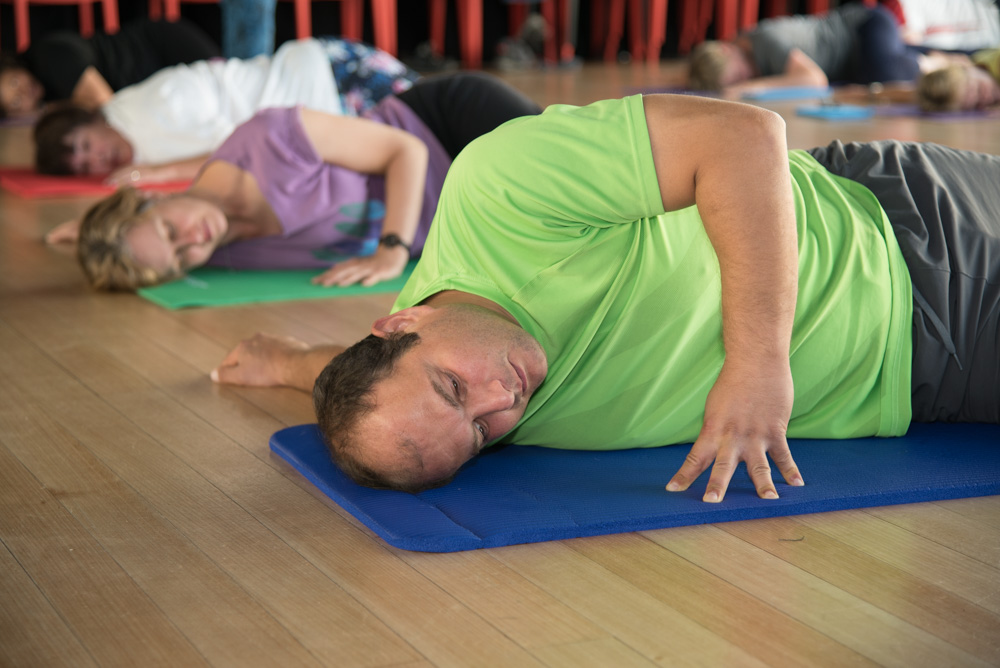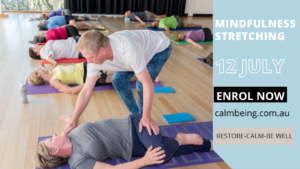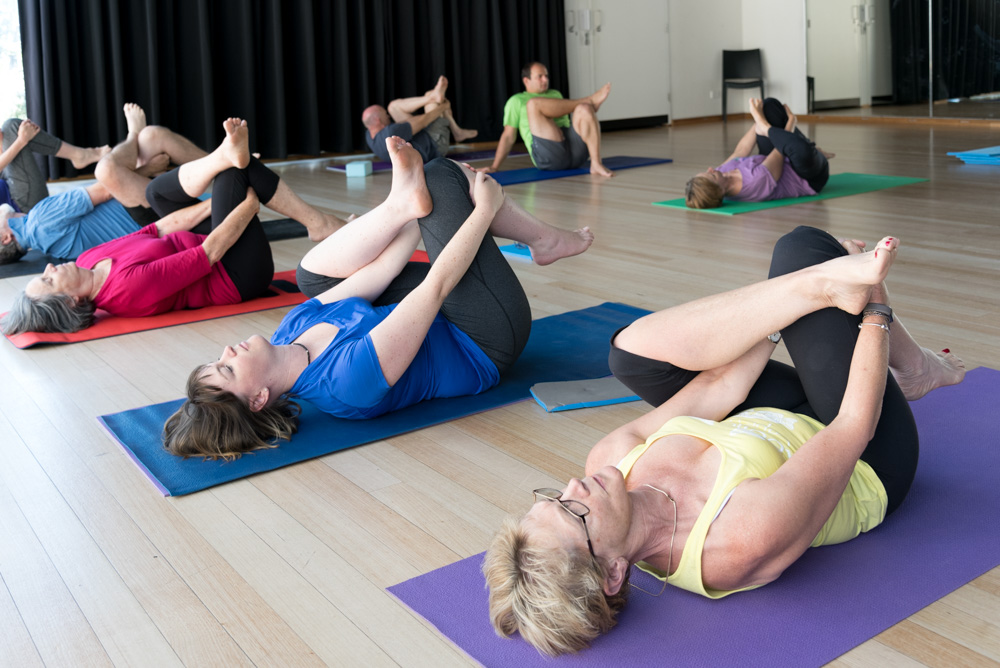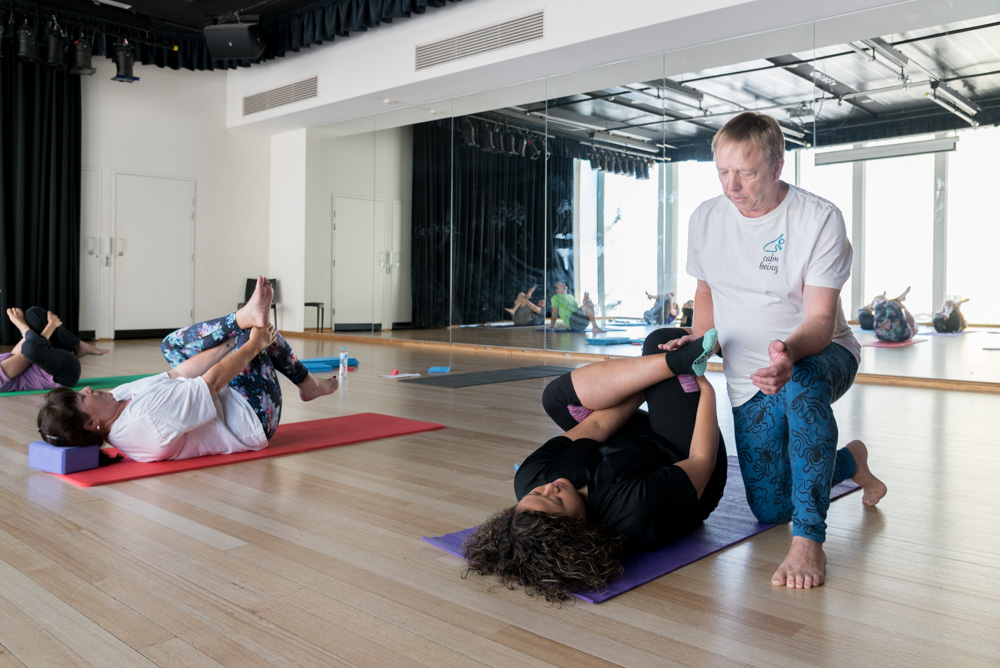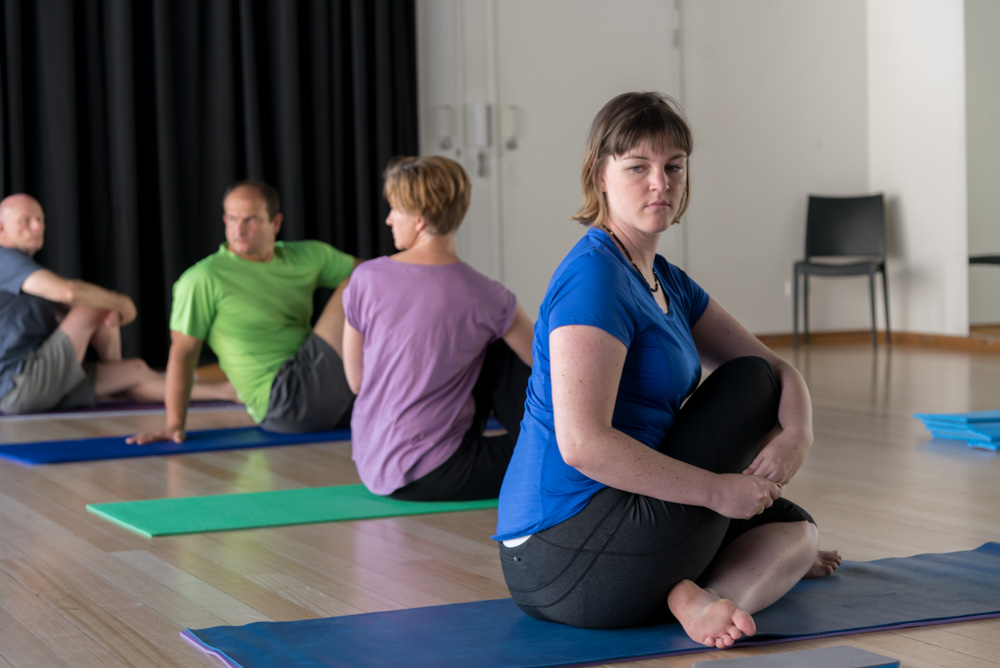STRESS AND ANXIETY
Persistent stress is a killer, it’s been well demonstrated through numerous physiological and psychological studies. Unrelenting stress also brings about anxiety and mental distress. Mental stress is something that we develop a resilience for, but everyone has a tipping point. Chronic aches and pains can contribute to chronic stress, and ongoing stress can contribute to chronic aches and pains. Mindfulness StretchingTM is a practice that can help relieve stress, reduce aches and pains, improve sleep and improve the regularity of the bowel. It is a great practice in support of medical treatment of anxiety in Canberra.
Mindfulness StretchingTM is a practice that allows people to achieve the alpha/theta brain-wave state. This is the calm, recuperating, self-healing brain-wave state that turns off cortisol and builds psychological resilience. Mindfulness StretchingTM also relieves chronic aches and pains with whole body Relaxation Stretching where muscles are individually “turned on” and then “turned off”. Together these outcomes provide a positive feedback loop that help you be your best self (and cope with the rigours of a mad world).
There are a lot of stressors impacting on the population at large these days: climate change, bush fires and smoke, coronavirus, employment, opportunities for youth. (I’m sure most people could tailor this list with their own particular concerns.) All our concerns build cumulative layers of stress that impact on our daily existence. Mostly they are just a part of the background fabric of live that ebb and flow with our emotional state, part of modern living. But sometimes a something extra comes along, even a small thing, and tips us right over the edge- that’s when we’ve reached maximum stress. We’ve all been there, it’s rarely pretty!
It’s not just our emotional regulation that’s at stake. The physiological impacts are numerous and significant: high blood pressure, unstable blood sugars, gut issues, cardiovascular heart disease, headaches, fatigue, as well as much more. This list can go on and on, but as we all know, too much stress just makes us feel awful.
It’s not just our body’s that suffer, our minds suffer too. Significant ongoing stress can result in depression, anxiety, Post Traumatic Stress and other serious mental health outcomes. Lesser impacts, though not to be sniffed at, include anger/ irritability, trouble sleeping, memory problems and feelings of being overwhelmed.
The impacts of stress and anxiety are particularly hard on young people. Today’s youth are digital natives that haven’t known a world without constant communication and the instantaneous feedback of all their peers (and beyond). The intensity is significant and the impacts are visible. Recent Headspace surveys reveal that “close to 70 per cent of respondents rated their mental health as poor or fair. While two-thirds reported high or very high psychological distress over the past 12 months.” Adolescence is hard enough without modern technology, and the general state of the future of the world weighs heavily on youth too.
We all know the difference: when we’re “on top of things” we can handle anything, but when things are getting too much even the littlest things become a big issue.
Amazingly, the refreshment that comes from temporary relief from stress is significant. It’s not just the moments of relaxation, but the moments that follow positively contribute to the benefits achieved. After a powerful relaxation activity, stressful concerns and anxieties are pushed away for a time- hopefully they will take a little while to return, and while you’re having respite from them your resilience to cope with them is growing. Even if your thoughts return to the negative stressful place, your mental state is better placed to acknowledge them without a damaging negative spiral. It’s like a brain re-set, you don’t immediately return to that same stressful place.
A significant relaxation event doesn’t remove the stressors in your life, but it can significantly reduce the stress of being stressed. This is no insignificant thing. As mentioned above, stress is cumulative so there is a multiplier benefit when we down-ramp stress. The negative spiral of stress compounding can be debilitating and can be the path to anxiety attacks. When we are only dealing with the stress of the actual event(s) we are in a massively better place to manage the pressure.
Some stressors are known, they are in our diary, they are going to happen. Whether it’s a job interview, a defining presentation, or your next up to bat: your time will come. The greater the importance the greater the stress and then it becomes our ability to manage stress and pressure not the ability we have come to demonstrate. Undertaking the right practices in the period preceding the event have a massive impact on performance when the time comes.
Front loading psychological preparations can start well before a stress event. Many individuals have undertaken Mindfulness StretchingTM sessions on the day prior to a significant event as the positive effects last well into the next day and the benefits of a good night’s sleep are clear to all.
WHAT WAS THE EVOLUTIONARY PROCESS THAT BROUGHT US HERE?
The evolutionary development of the human species did not design us for a near permanent state of stress. Our fight/flight response is designed to react instantly to a threat with adrenalin super-charging our muscles and redirecting blood flow away from digestion thereby recruiting all our physical resources to save our physical body from the immediate threat. Unfortunately, modern life provides enough stress for our primitive brain to be constantly releasing adrenalin and the associated hormone cortisol. These are great in short bursts, but they are very damaging when constantly released by the body.
The dangers of constant cortisol are well known and the list is growing. It has been implicated with coronary and heart disease, is associated with Type 2 diabetes and negatively affects the immune system. Without a shadow of a doubt, effectively managing this hormone benefits our health.
Fortunately cortisol can be neutralised (turned off) by the body in a millisecond- just as fast as adrenalin. Finding a practice as a mechanism to activate the neutralisation of cortisol is a key attribute of high achieving individuals. Without mechanisms to down ramp stress and the physiological impacts of stress it is all too easy for a high performer to crash and burn.
Constant unresolved stress magnifies chronic aches and pains. This occurs in at least two ways: the physical manifestations of stress in the body and the intensification of sensation/ reduced capacity to endure discomfort. Stress manifests in the body in the form of tight muscles and constantly tight muscles are uncomfortable. The body does not just “hold (emotional) tension” in the shoulders and neck, such tension is held throughout the whole body. Secondly, stress modulates pain perception as well as the capacity to adapt to the pain sensations. The sympathetic nervous system becomes stimulated from the body’s constant stress arousal. With persistent arousal the body becomes vigilant for potential danger and becomes highly sensitised to pain stimulus.
Chronic aches and pains can also become a negative loop enhancing stress and anxiety. Chronic pains prevent us from doing things that bring us joy as well as being a constant negative presence in our psyche. Chronic pain is very strongly corelated with low mood scores and this can affect our domestic, work and social relationships. Chronic pain can lead to reduced socialisation and movement when it is probably when we need other people and the movement of our body the most.
The activation and extension of muscles in a targeted fashion can significantly reduce chronic aches and pains. Contract / Relax stretching brings physical and mental resources to a specific targeted part of the body before a deliberately induced relaxation of this same area. The contraction “turns on” the muscle the relaxation “turns off” the muscle. So many times we’ve all had to turn off some technology before turning it on and having it miraculously work, it’s a similar thing with the body.
The relaxation phase of a Contract / Relax practice delivers a deliberate release to a specific area of the body. Bringing a deliberate relaxation to each of the major body parts results in a wholly relaxed body. Once the body is relaxed many chronically sore muscles are much more comfortable, they stop aching. It’s not just the neck and shoulders that carry stress, the whole body does and when you release that tension much of the stress response that the body is conveying to the brain is immediately stopped.
One of the elements of Mindfulness StretchingTM is the explicit focus on Relaxation Stretching. Muscles in the body will not lengthen unless they are relaxing. By tuning the practices very acutely to the relaxation reflex the stretches both release the aches and pains as well as relaxing the muscles. Once the major muscle groups are relaxed the body is relaxed, and when the body has relaxed the psyche can relax.
The Mindfulness StretchingTM practice deliberately coordinates the extension (stretch) with the exhaling breath. This enhances the quality of the relaxation stretching and engages the mindfulness element of the practice. Having the participants attention focusing on the feeling of the body relaxing is very alluring for the attention, it effectively brings a singular focus of mental attention. This is a powerful meditative act that quietens a racing mind bringing it to a state of alpha / theta.
With the physical body relaxed sleep often comes more easily. The brain is quietened from the hectic stimulus of the day, the body is relieved of its usual chronic aches and pains. Sleep comes more easily and is more recuperative.
The profound calmness delivered by the Mindfulness StretchingTM practices are a function of the calming of the brainwaves. Slowing the brainwaves to the alpha-theta frequency (4-12 hz) is a powerful outcome many practices can deliver. Mindfulness, yoga, meditation, and Qigong strive to deliver beneficial outcomes by achieving alpha-theta brain-wave frequencies. Alpha-theta brings calm within yourself, it allows you to keep your head when others are losing theirs, it enables you to rely on your intelligent self when things are going crazy.
The alpha-theta brain state is the mental state of deep relaxation, deep meditation. We are fully conscious but unaware of our immediate surroundings. In this state there is no mind-chatter, no negative self-talk. This is where we are “in the zone” performing at our best with complete attention to task. It is a place that we can grow psychological resilience. It is a state that is achieved with the practices of Mindfulness StretchingTM as the instructor’s cues lead you to focus solely on your breath and the associated movement through your body.
Mindfulness StretchingTM avoids some of the difficulties that anxious people with racing minds strike with meditation and mindfulness. These practices do not require you to “clear your mind”, instead your attention is brought to physical sensations within the body. The constant stream of simple instructions resolves the focus of your attention into the body with each breath. There is no room for anxiety or “to do” lists as your attention is fully consumed with the movement within your body. This connection of the mind and body delivers the alpha-theta outcomes.
Mindfulness StretchingTM practices generally run for 60 minutes and this prolonged connection with alpha-theta brain-waves delivers considerable psychological relief and calmness. An hour free from cortisol and disconnected from our hyper-connected world provides a massive opportunity for the mind to refresh and revitalise. This is the front-loading of resilience, giving you greater wherewithal to cope with your daily stressors and more.
In addition to the psychological relief above, Mindfulness StretchingTM delivers a fundamentally relaxed physical body. The whole-body relaxation generated by a 60 min Relaxation Stretching session provides a persisting message of “calm” from the body to the mind. In the same way that our body can “hold tension”, it can “hold calm” and deliver this message of calm to the mind for hours if not days.
On top of all the above, people sleep better when both the psyche and body are at ease. More positive feedback!
But for some people, one of the best outcomes is several days of bowel regularity. Mindfulness StretchingTM practices involve a goodly amount of abdominal activation during the session and this stimulates the passage of our digestion through the gut. An easy evacuation of the bowel can bring about a much better day for many.
#anxiety Canberra
